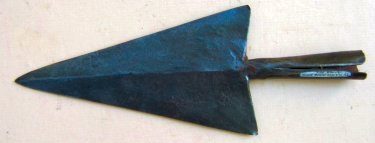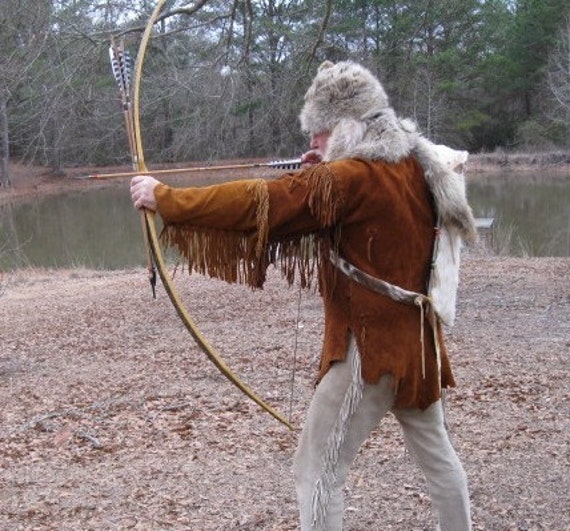My Dad and I got to working on splitting the log. It took longer than I had expected; nevertheless we got it split with some metal chisel/wedge spikes we found in the garage. The split wasn't very clean, in fact we cut through my sharpie-line marking the where the bow was going to be. Fortunately, I found a good spot to shape the bow on both halves. This way, if I mess up on one half, I'll have the other half to go back to.
One of the things I planned wrong, was splitting the log on a knot/cut-off branch. Knots are not very good when making bows, and by splitting through, we basically made both halves have the same problem...ugh.
I need a draw knife now to get the half down to the rough size and shape, so I've posted some 'wanted' ads on freecycle (they're expensive). I'm going to let the staves dry for a couple of weeks or more. Some people let theirs dry for a few years. To get around this some people use kiln-dried wood which can be bought at the hardware store. This stuff if brittle and will NOT make a bow. (I'll get into why not and my experience with it in another post)
I'm going to let mine dry for a couple weeks (or until I get my draw knife if that will be longer than a couple weeks) and then rough out the bow. After, if gets rather warm, I'll stick it up in the attic to dry quicker. (a month or so should do) If it doesn't get warm soon, I'll probably work it while it's still green. That way, if I want to add some re-curve to it, it'll be easier to bend with steam and heat. I haven't made up my mind exactly how the process will go, but I'll know later down the line.
Each stave is about 50" long, a little short, but that's okay for my first bow. :)
 |
| Putting wood glue on the ends of the staves slows the drying process to prevent checking or splitting. |
 |
| Kaya thinks we split it for her... |














 I sure learned that lesson. The bow I made did bend nicely and I was able to string it and shoot a quite a few arrows with it. But once I cut that arrow rest, it cracked and broke. Thankfully, it broke on the tiller stick, not in my hands (ouch).
I sure learned that lesson. The bow I made did bend nicely and I was able to string it and shoot a quite a few arrows with it. But once I cut that arrow rest, it cracked and broke. Thankfully, it broke on the tiller stick, not in my hands (ouch).
